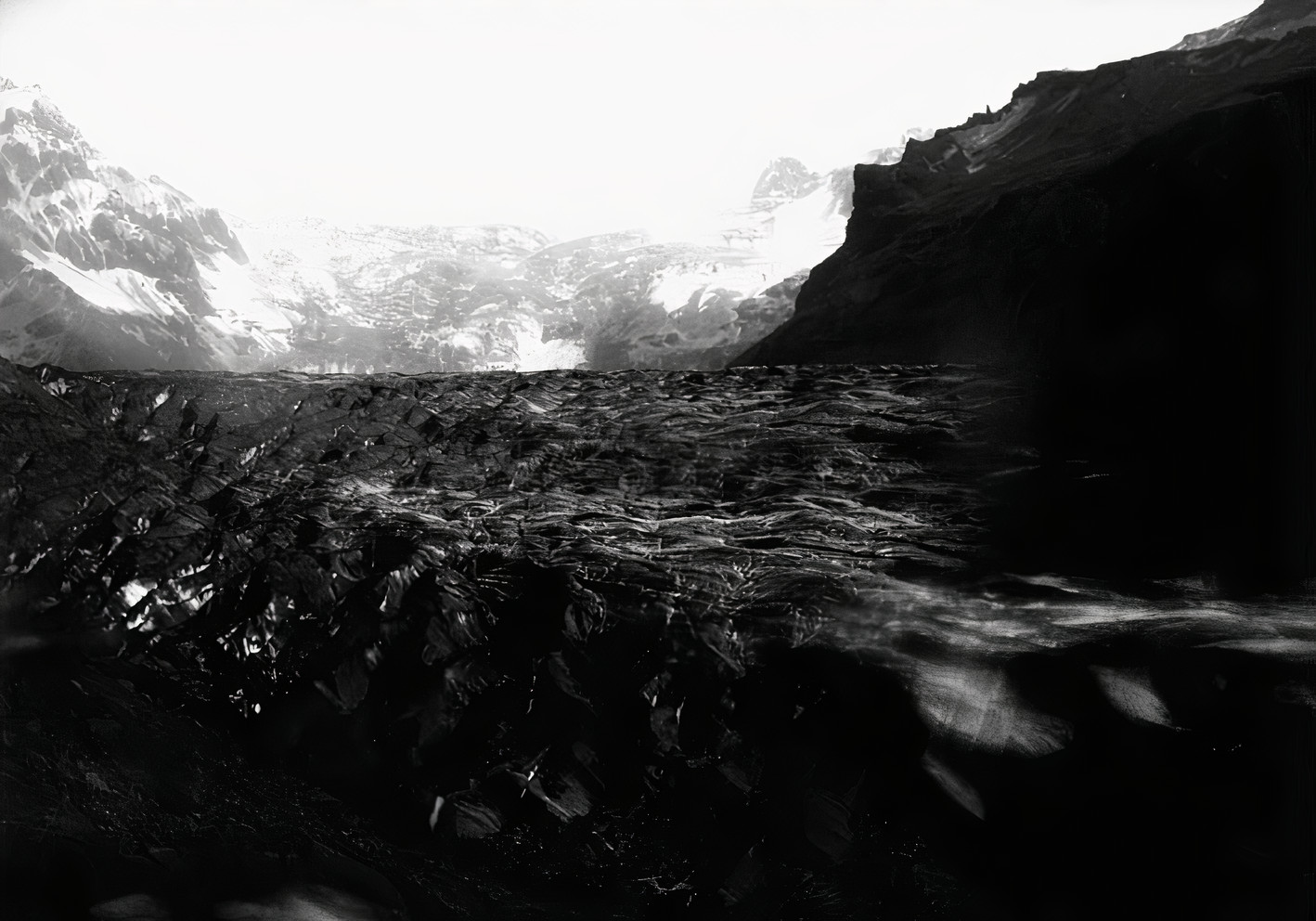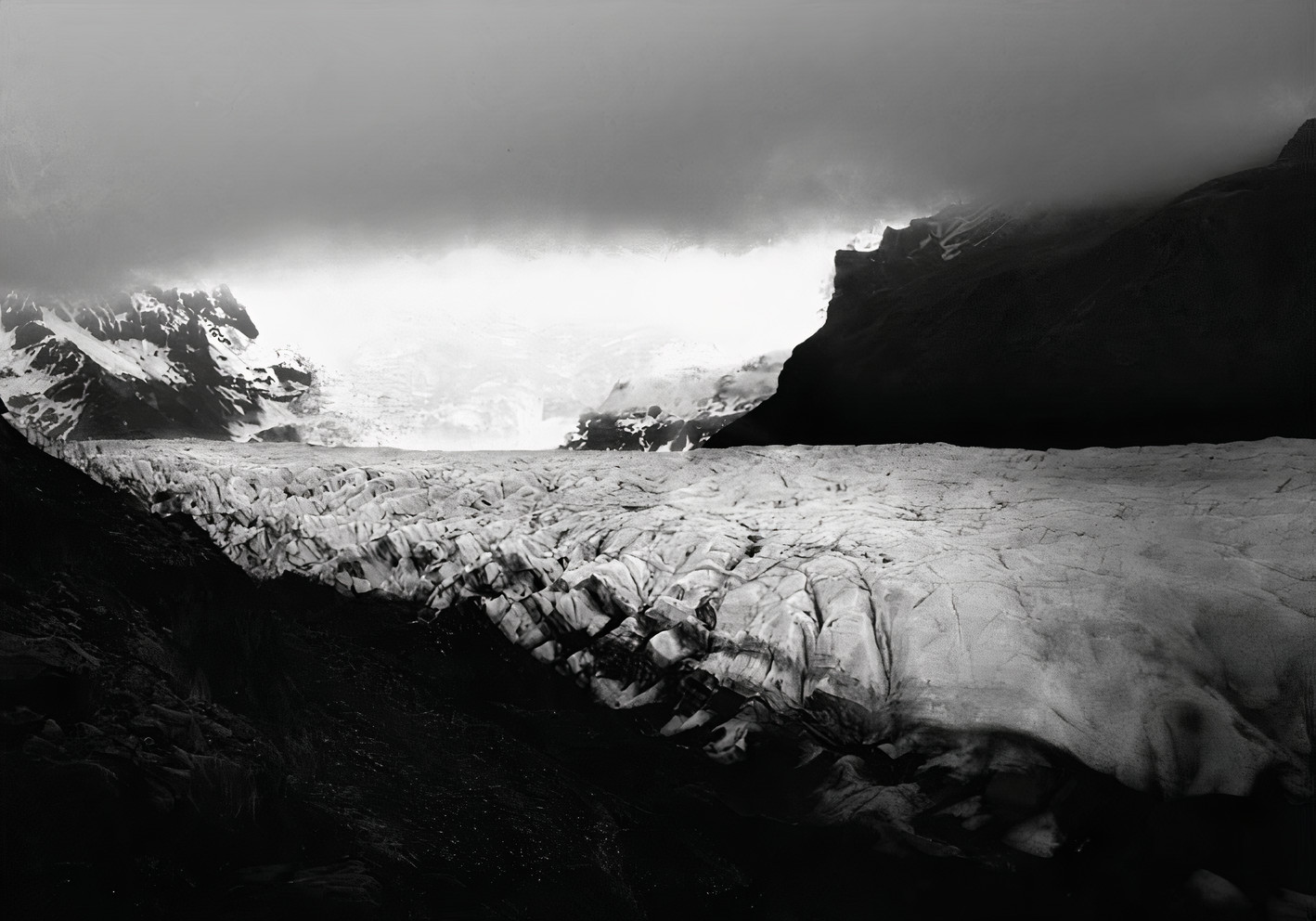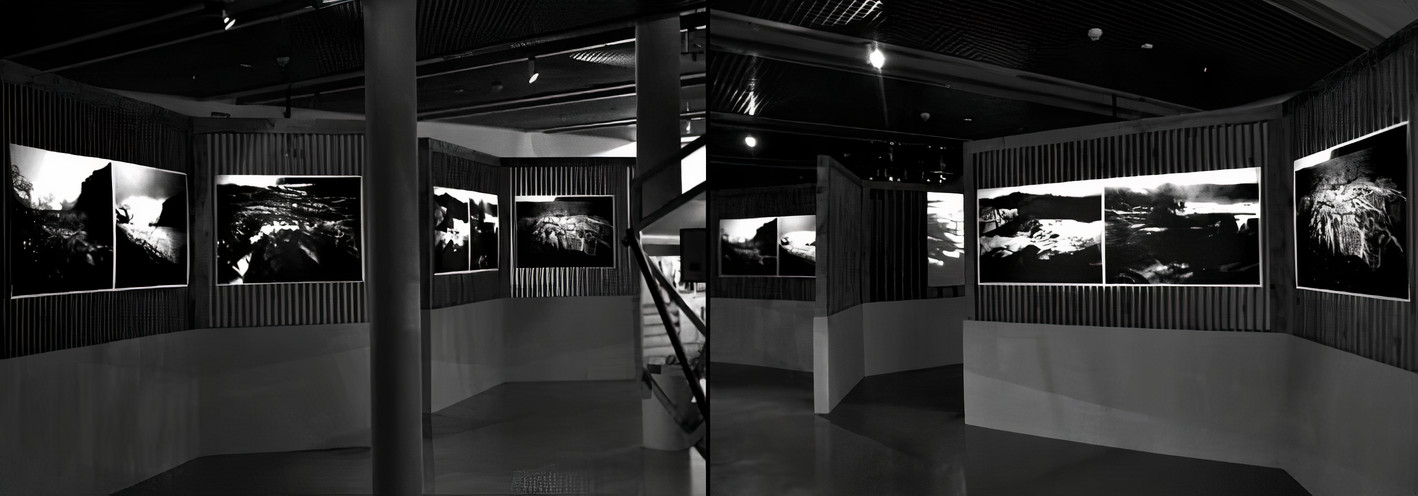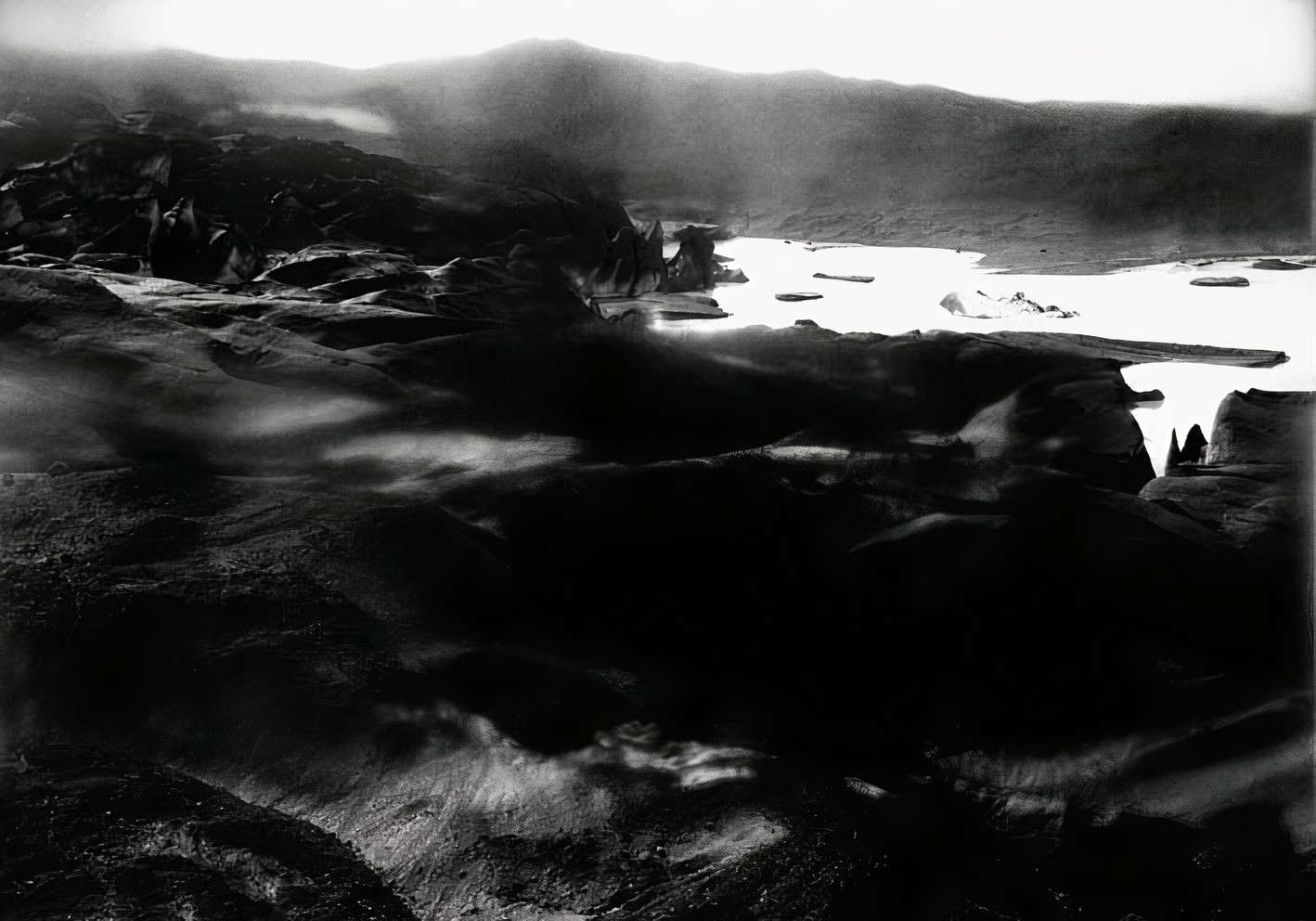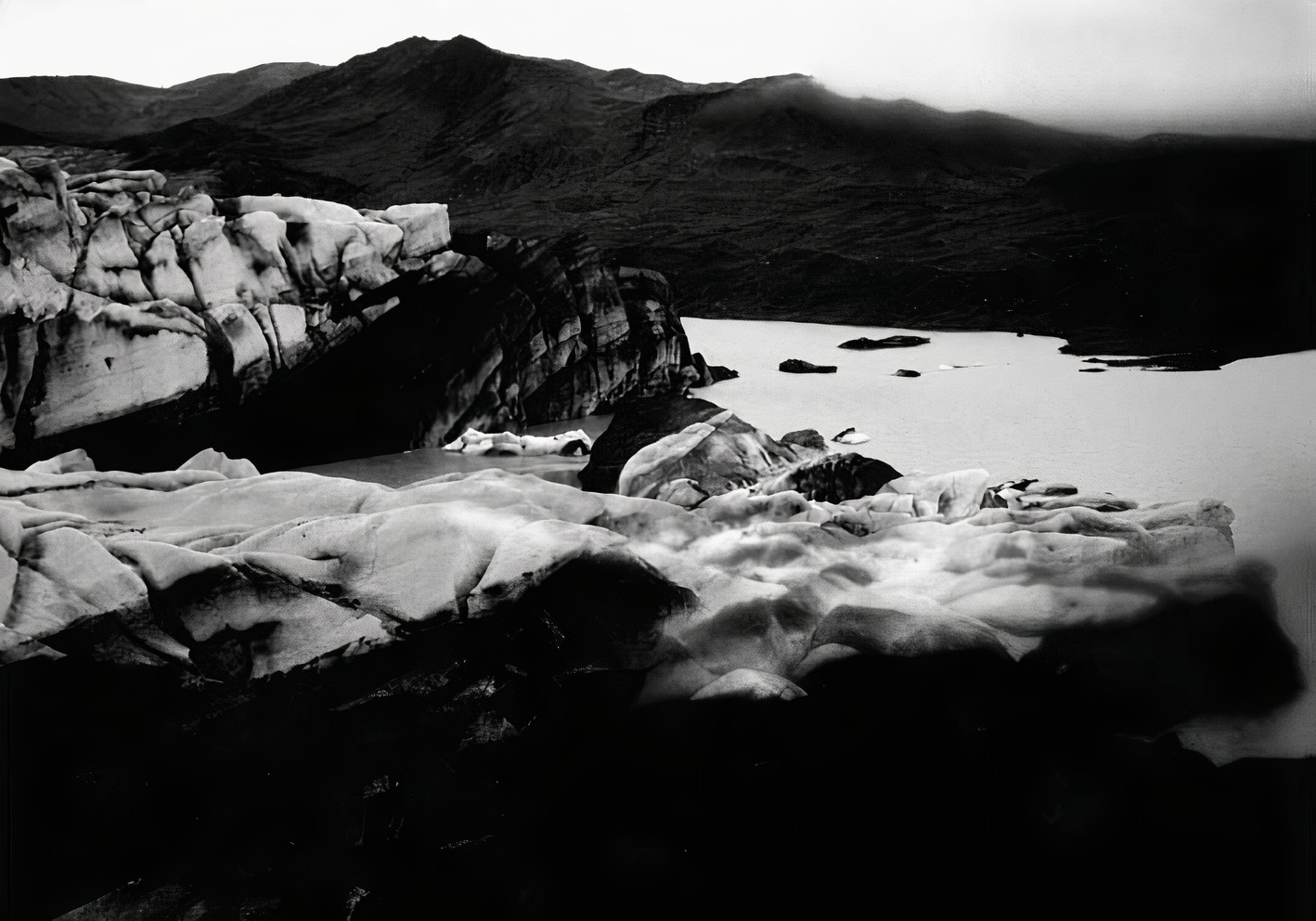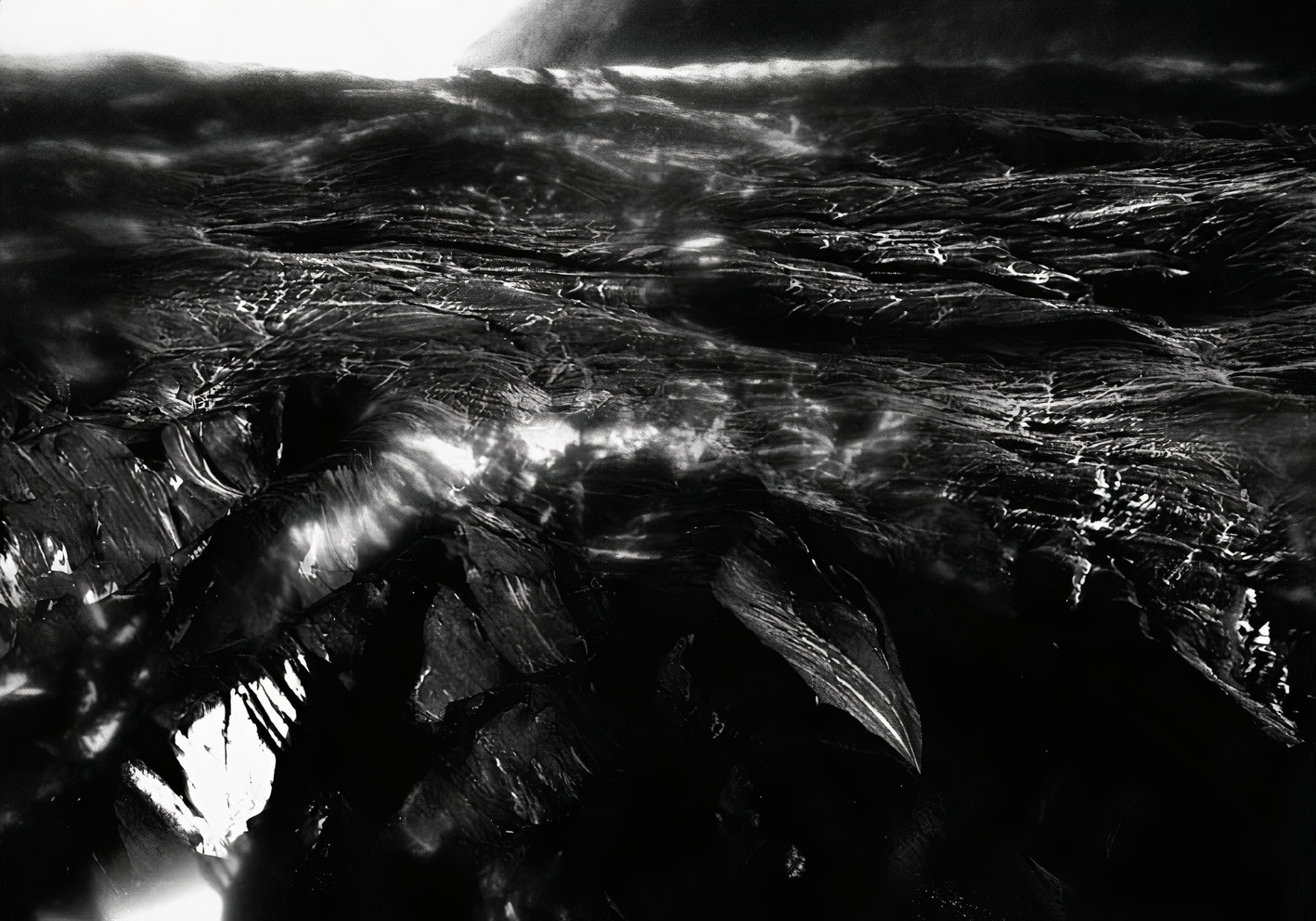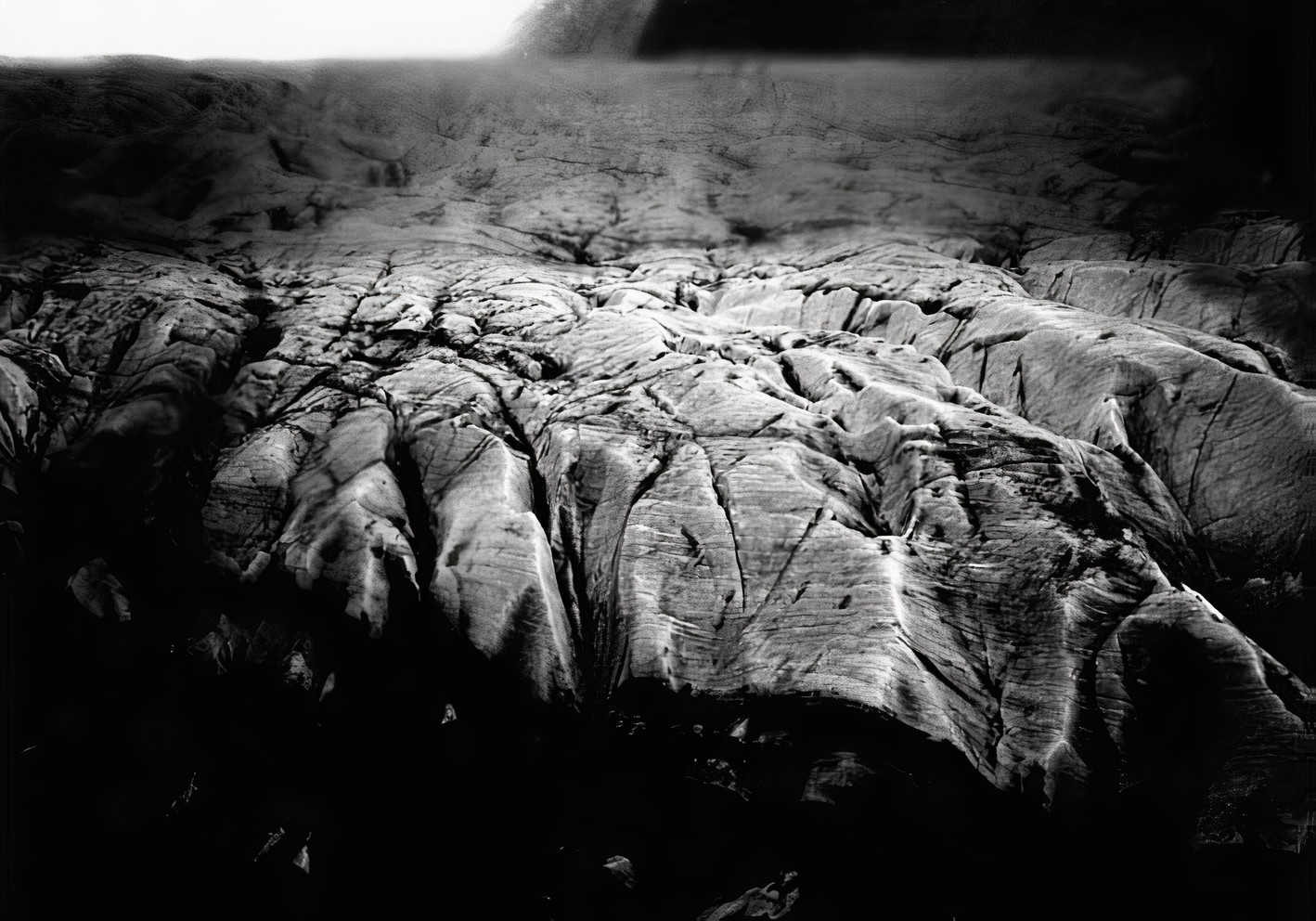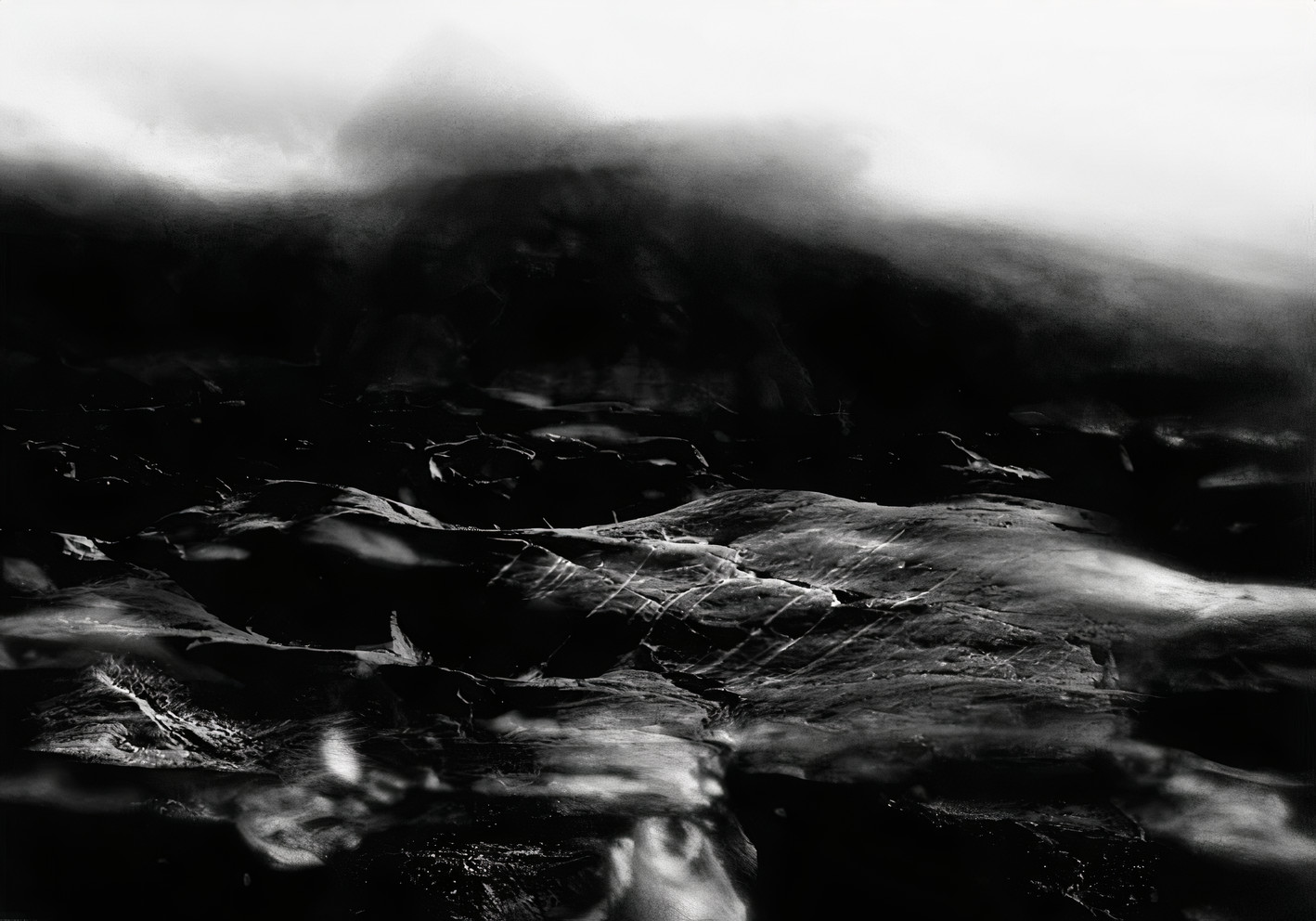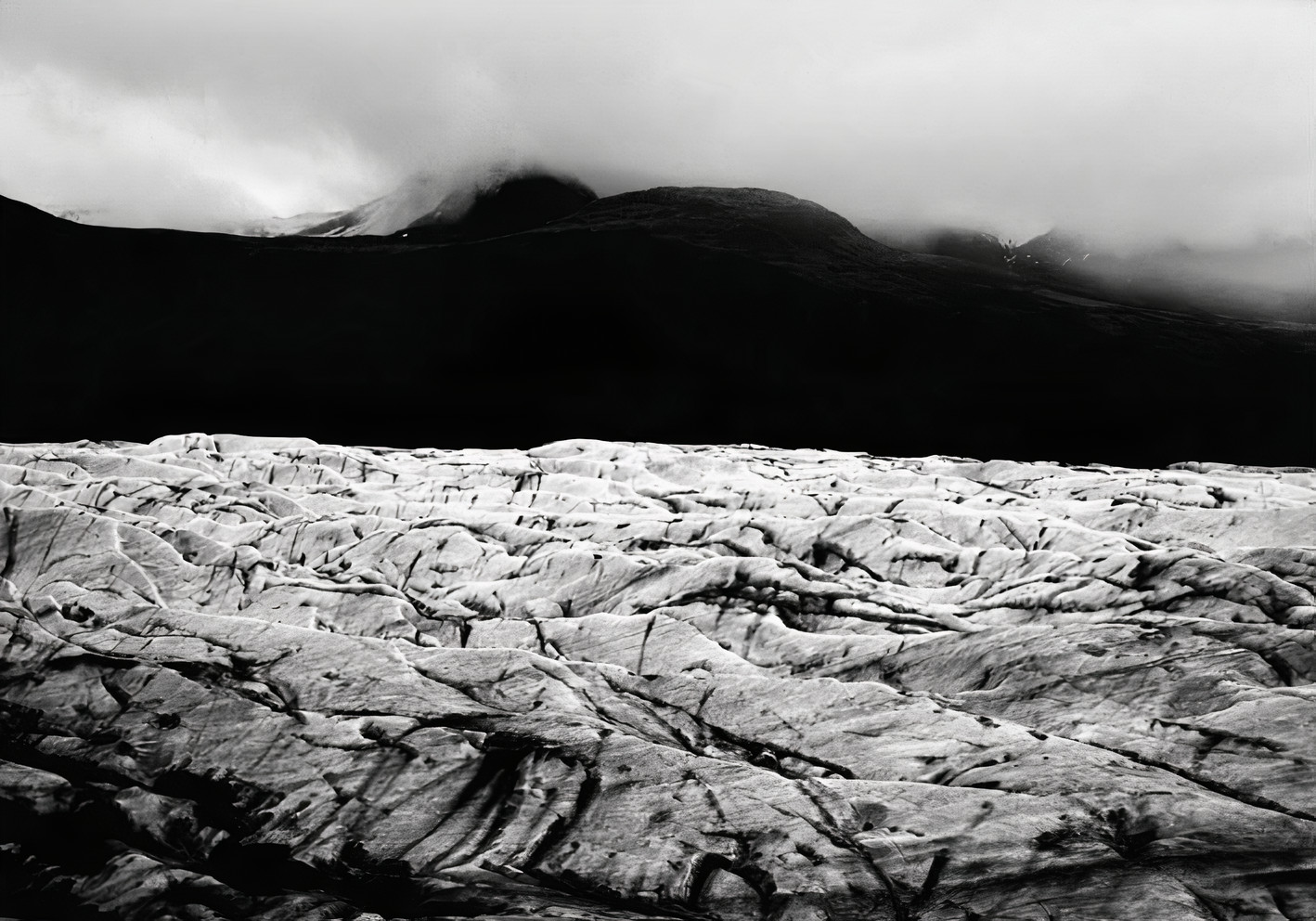A PLANET
On 22 May 2011, Iceland’s most active volcano, Grimsvötn, erupted with full force, hurling a cloud of ash 15 kilometres into the air. The eruption produced more ash in the first 24 hours than the entire forty-day eruption of Eyjafjallajökull in 2010, which paralysed air traffic and stranded travellers throughout Europe.
Black phase – A first series of photos was taken shortly after the eruption, when a thick layer of dust and ash covered large parts of the Vatnajökull glacier.
White phase – A second series of photos was taken in May 2012, one year after the eruption of Grimsvötn. Snow, rain, wind and glacial storms had eroded and partially cleansed the blackened matter.
Photo 1 [the black phase] 2011
Photo 1 [the white phase] 2012
A Planet in Untimely Stories, Muzeum Sztuki Lodz, Poland, 21 September – 2 December 2012
Curators: Jaroslaw Lubiak and Joanna Sokolowska
Artists and groups: Akademia Ruchu, Mohamed Bourouissa, Gast Bouschet & Nadine Hilbert, Jérémie Boyard, Peter Friedl, Jens Haaning, Agnieszka Kalinowska, Aleksander Komarov, KwieKulik, Anikó Lóránt & Tamás Kaszás (ex-artists collective), Nástio Mosquito, Ahmet Ögüt, Wendelien van Oldenborgh, Janek Simon, Slavs and Tatars, Mona Vatamanu & Florin Tudor
… according to the curators our work genuinely represents the agency of the unpredictable (and thus in a sense the unconscious) that may strongly influence our life and our political, economical and social realm.
Curatorial Statement:
Untimely Stories is an attempt to recognize the contemporary and upcoming situation of Europe through art. At a time when the social contracts and ideas that the European model had been based on are eroding, requiring new ideas for future, art may offer diagnoses and suppositions without making claims to being a solution to current problems. Politics of art (contrary to conventional politics) makes particular use of fiction in which it sees the function of truth. It creates stories which signals the truth of what is contemporary or upcoming.
According to Nietzsche, to act untimely is to act counter to our time and thereby act on our time and thus ‘for the benefit of a time to come’. Expanding upon Nietzsche’s theory, Giorgio Agamben identifies the untimely with the contemporary. According to him, who is truly contemporary goes beyond his or her time, beyond the present moment, beyond the pragmatic logics of punctuality. Those who inscribe themselves into the present perfectly are unable to see it. Only an active, often conflicting, attitude with one’s time makes it possible to recognise it properly and act accordingly – in agreement with subjectively perceived truth about time. The works presented at the exhibition are untimely in this sense. They become contemporary by means of going beyond their own moment in time. They are an act of opening to that which is to come and to the upcoming effects of our past.
Untimely Stories created by the artists present perspectives different from Europe’s currently dominant, integration-driven economism, in which the management of resources is construed in a highly limited way. They oppose it with a general economy (which also includes gift and hospitality economies, the politics of friendship, the critique of non-human reason, innovative ecology, non-systemic modes of survival and so on). They propose a reversal of present geopolitical relationships, determining dependencies between centres and peripheries. They confront the coming of communities which will go beyond current models of liberal democracy. They suggest an urgency of adaptation to that which is unforeseeable and yet unrecognised in the traditions of western European modernity. The exhibition does not provide solutions to be pragmatically applied or visions to be realised. Rather, it suggests ways in which we could think, see and feel in order to make a different kind of action possible. Europe should be thought, perceived and felt differently if it is to overcome current crisis. The exhibition is being prepared when as a civilisational model, political project, source of inspiration and inspiring myth, Europe is becoming a spectre. This especially applies to the European Union which was designed to become a fulfilment of this model or myth, and a practical application of the project. That is why ‘Europe’ ceases to be a notion associated with any system able to propose solutions for increasingly complex social, political, economic and cultural issues, becoming a synonym instead for a problem that possibly requires a solution itself. When all that was supposed to be solid melt into air, art confronts us with the spectre of what is to come, or what may come. The works created by artists translate various, often contradictory, ideas, views, preoccupations and attitudes as well as ideologies, myths and stereotypes into the language of art. The exhibition space will be a place for all of them to meet. Perhaps it will combine the singular voices into accounts that, rather than cancelling each other out, will resound together, forming a polyphonic narrative about Europe. It is an attempt to think of art as an artificial, fictional language for expressing the kinship of the dissimilar.
Installation views, Muzeum Sztuki Lodz, Poland, 2012
Photographies on photosensitive canvas, 8 x (89 x 138 cm)
A Planet – Gast Bouschet & Nadine Hilbert
The photographs of both the black and the white phase reveal an unusual landscape. It turns out that the Earth is a planet that we do not know, or at least we do not know it entirely. Certain phenomena and the workings of some forces we’re simply unable to predict. The photographs depict this inconceivable force, mingling the aesthetics of beauty with the aesthetics of vastness. These photographs are a part of a greater whole featuring also films shot in Iceland and London. In a series entitled “A Planet”, the artists attempt to grasp instances, and the influence on social and individual life, of that which is unforseeable, incomprehensible, unrecognized. The explosion of a volcano is just one example of the intervention into the human order of unbriddled forces that undermine its political, economic and social foundations. We could say that the photographs of the black phase show this instance in full force. As for the photographs of the white phase, they present a force even more amazing which could be called the vitality of the inanimate. Bouschet and Hilbert refer also to P. Sharp (from the book Living Ice: Understanding Glaciers and Glaciation), who compares a glacier to a person able to adapt to changing conditions of the environment. Unpredictability and adaptation, the images created by the artists become metaphors of these two instances. Aren’t these, indeed, two dimensions of inevitability with which we must contend?
(Jaroslaw Lubiak and Joanna Sokolowska: from the exhibition catalogue)
Photo 2 [the black phase] 2011
Photo 2 [the white phase] 2012
Photo 3 [the black phase] 2011
Photo 3 [the white phase] 2012
Photo 4 [the black phase] 2011
Photo 4 [the white phase] 2012
Glaciers, so simple in chemical composition, are actually complex, vital entities. Far from being a passive chunk of ice, a glacier is a dynamic system, sensitive to its surroundings, and constantly changing to adapt to its environment. Glaciers are active creatures, delicately attuned to their environment. They can be brutally owerpowering, yet surprisingly sensitive to subtle influences when exercising their strength.
– Robert P. Sharp, Living Ice, Understanding Glaciers and Glaciation
